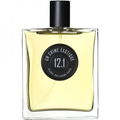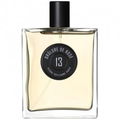A perfume by Pierre Guillaume for women and men, released in 2014. The production was apparently discontinued.
Pronunciation Compare
Pronunciation Compare
Fragrance Notes
 Bergamot
Bergamot  Blackcurrant
Blackcurrant  Cinnamon
Cinnamon  Geranium
Geranium  Hedione
Hedione  Indian sandalwood
Indian sandalwood  Lavender
Lavender  Lemon
Lemon  Magnolia
Magnolia  Mandarin orange
Mandarin orange  Musk
Musk  Rose
Rose  Tonka bean
Tonka bean  Violet
Violet  Fossilized Microchip
Fossilized MicrochipNo ratings yet.
Submitted by mcdonaldt13, last update on 05/11/2025.
Interesting Facts
The fragrance was part of the collection Inspired Hybrid.
Smells similar
What the fragrance is similar to




























